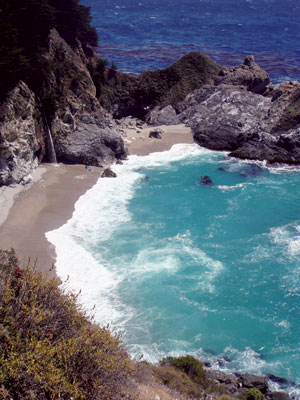All Nonfiction
- Bullying
- Books
- Academic
- Author Interviews
- Celebrity interviews
- College Articles
- College Essays
- Educator of the Year
- Heroes
- Interviews
- Memoir
- Personal Experience
- Sports
- Travel & Culture
All Opinions
- Bullying
- Current Events / Politics
- Discrimination
- Drugs / Alcohol / Smoking
- Entertainment / Celebrities
- Environment
- Love / Relationships
- Movies / Music / TV
- Pop Culture / Trends
- School / College
- Social Issues / Civics
- Spirituality / Religion
- Sports / Hobbies
All Hot Topics
- Bullying
- Community Service
- Environment
- Health
- Letters to the Editor
- Pride & Prejudice
- What Matters
- Back
Summer Guide
- Program Links
- Program Reviews
- Back
College Guide
- College Links
- College Reviews
- College Essays
- College Articles
- Back
Preventing Coral Microplastic Consumption
One of the greatest challenges facing Earth's ecosystems is plastic pollution. Plastics are non-biodegradable and are resistant to decay. While this is helpful in our everyday life, it is detrimental to the environment. Plastics can be broken down into smaller fragments by being exposed to sun and the ocean environment, but the process is extremely slow. One fishing line can take up to 600 years to disintegrate. Our oceans are filled with plastic.
Microplastics, small pieces of plastic that have a diameter of less than 5 millimeters, have had a huge impact on marine life such as turtles, fish, sandworms, and more. Surprisingly, one type of marine animal most people don’t think can be affected by plastics is corals, a major part of the ocean’s ecosystem. Coral eat by filtering nutrients from small matter suspended in the water. They clean the water from floating particles, allowing other marine life to thrive. [3] After coral polyps die, their skeletons becomes coral reefs. Coral reefs are incredibly important for marine environments because they provide habitats and shelter for organisms and protect coastlines from damaging waves or storms. Coral reefs support more species per unit area than any other marine environment. [1]
Scientists in Australia researched the harmful effects of microplastics on coral reefs by studying The Great Barrier Reef. As the world’s largest coral ecosystem, the Great Barrier Reef supports a huge amount of marine life, and because of its beauty, it draws tourism to Australia. [1] The Great Barrier Reef has been slowly destroyed in the past century by human impacts such as overfishing, agricultural pollution, land development, and of course, plastic waste. [3]
Why exactly are microplastics so harmful to corals? Australian researchers of the ARC Centre of Excellence for Coral Reef Studies sep up a test by putting Great Barrier Reef corals into plastic contaminated water. Two nights later, they found that the corals had eaten the plastic particles. Furthermore, the plastic was found wrapped deep inside the coral polyps’ digestive tissues and stomachs. [2] This is quite alarming because the plastic particles slowed down the corals ability to digest its normal food, making the coral stop filtering the water and receiving vital nutrients. [2]
Scientists at Duke University discovered that the corals don’t usually eat random particles. Because corals don’t have eyes and aren’t attracted to plastics, researchers came to the conclusion that it’s quite likely corals might like the taste of the plastics. This makes sense because plastics have hundreds of phagostimulants, chemical additives, especially after being processed from factories. [7] Corals given biofouled, or dirty plastics, ate at a much lower rate than clean plastic. [4] Researchers estimate that plastic pollution ruining coral reefs will increase dramatically unless action is taken.
What can you do about this? Please start to recycle plastic containers and support legislation that will promote healthy environments. Bottle bills, laws that require deposits to be paid on beverages sold in recyclable bottles and cans, have been proven to be quite effective in increasing recycling. [6] Supporting these bills in states that don’t yet have them will definitely improve recycling.
Finally, here’s where engineering comes in: research is needed to find ways to make plastics less tasty to corals. If chemical or material engineers could create plastics that corals don’t like, it could reduce their ingestion by corals. Studying the phagostimulants from microbial fouling could be useful in finding out what repels corals from plastics.
References
1. Bowen, James, and Margarita Bowen. The Great Barrier Reef : History, Science, Heritage, Cambridge University Press, 2002. ProQuest Ebook Central.
2. "Great Barrier Reef Corals Eat Plastic." ScienceDaily, 24 Feb. 2015. 4158.htm. Accessed 9 May 2018.
3. Hutchings, Pat, et al., editors. The Great Barrier Reef. Collingwood, Australian Coral Reef Society, 2009. Biology, Environment, and Management.
4. Kroon F, Motti C, Talbot S, Sobral P, Puotinen M. (In review). A protocol for identifying, characterising and quantifying microplastics in environmental samples. Nature Scientific Reports.
5. Reisser, J., Shaw, J., Wilcox, C., Hardesty, B. D., Proietti, M., Thums, M., & Pattiaratchi, C. (2013). Marine plastic pollution in waters around Australia: characteristics, concentrations, and pathways. PLOS One DOI.
6. Royte, Elizabeth. Garbage Land On The Secret Trail Of Trash. 2005 ed., Boston, Little, Brown and Company, 2005.
7. "Taste, not appearance, drives corals to eat plastics: Sightless corals aren't making the mistake on appearance." ScienceDaily. 28 Oct. 2017.

Similar Articles
JOIN THE DISCUSSION
This article has 0 comments.
